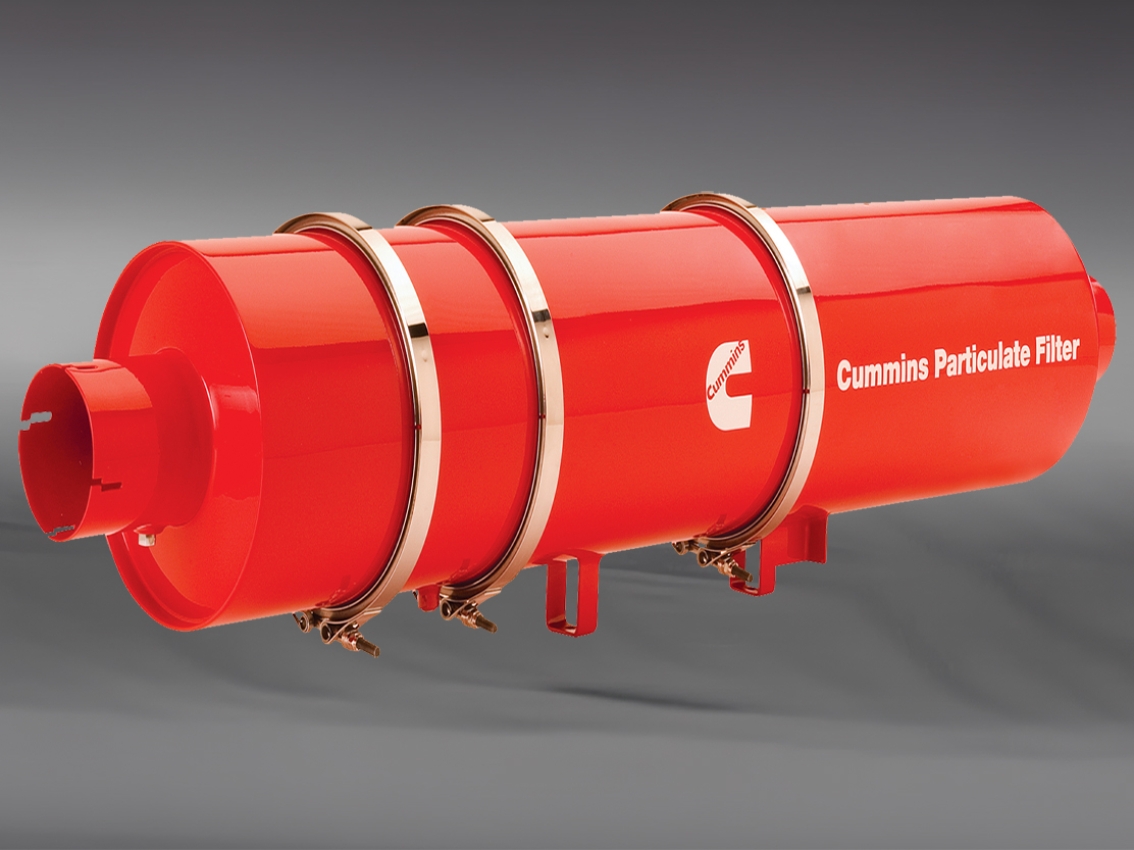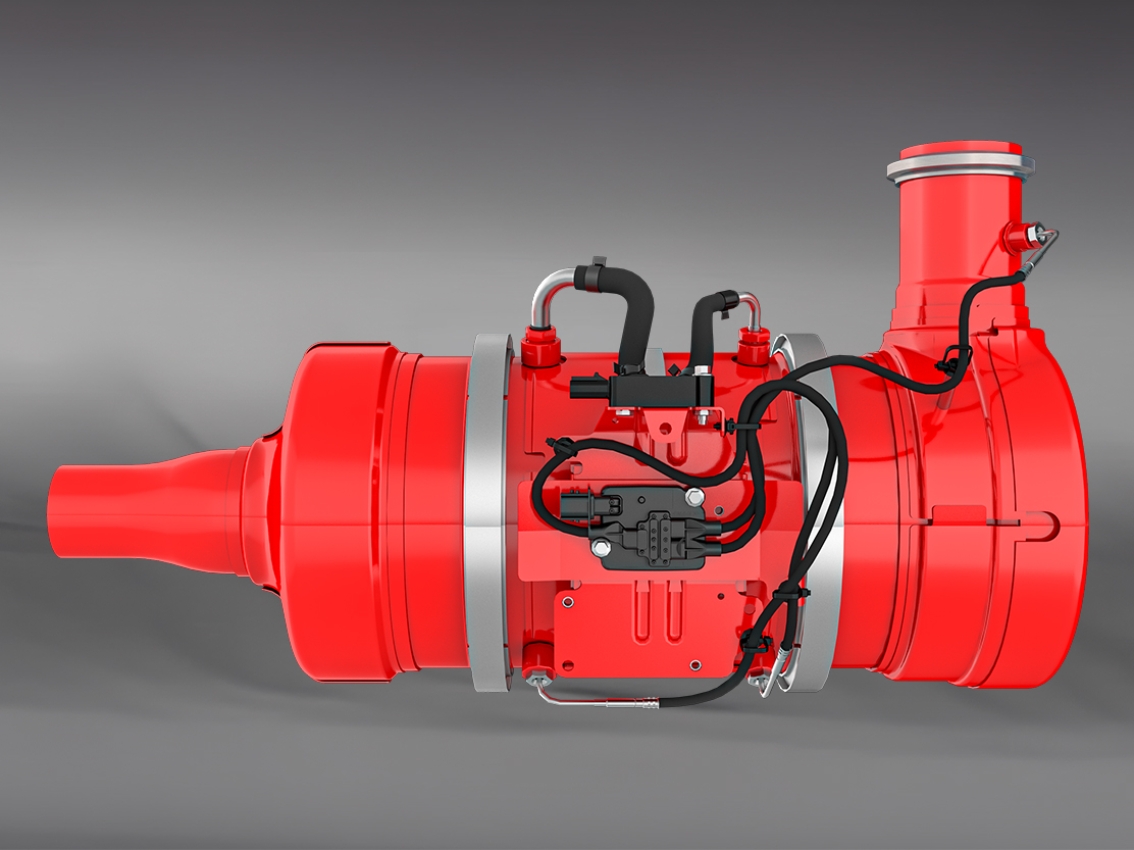
Cummins develops industry-leading aftertreatment technology designed to meet our customers’ needs for performance and reliability while optimizing fuel efficiency and cost savings. Cummings Emissions Solutions (CES) helps customers worldwide to meet the emission standards for today, tomorrow, and beyond with innovative, flexible, and integrated technology for light, medium, heavy-duty, and high-horsepower commercial off-highway markets.
On-highway aftertreatment systems are used to reduce or control the emissions of pollutants from internal combustion engines. These systems are typically employed in vehicles that operate on highways, such as cars, trucks, and buses. The goal is to comply with increasingly stringent emission standards and regulations set by environmental authorities to minimize the impact of vehicle emissions on air quality and public health.
Key components of on-highway aftertreatment systems

DPFs are designed to capture and remove particulate matter (soot) from the exhaust gases of diesel engines. They work by trapping the particulates and periodically regenerating (burning off) them to prevent clogging.

These catalysts facilitate the oxidation of pollutants like carbon monoxide and unburned hydrocarbons into less harmful substances.

SCR reduces nitrogen oxide (NOx) emissions by injecting a urea-based solution into the exhaust stream, where it reacts with NOx over a catalyst to form harmless nitrogen and water vapor.
Other key components
Cummins' combination systems integrate multiple aftertreatment technologies to provide comprehensive emission control. By combining SCR, DPF, and other components, these systems deliver optimized performance across various operational conditions, ensuring compliance with emissions standards.
Our Three-Way catalyst systems are used for natural gas engine applications and oxidize exhaust gas pollutants (HC and CO), and reduce nitrogen oxides into harmless components.
Our Hydrogen combustion engine (H2ICE) systems use technologies similar to diesel systems such as SCR to reduce oxides of nitrogen, and particulate filters in order to meet the worlds most stringent emission standards.
Precise injection of Diesel Exhaust Fluid (DEF) into the exhaust stream of engines equipped with SCR systems helps reduce nitrogen oxide emissions.
Electric heaters optimize the performance of aftertreatment systems by maintaining the temperature of exhaust gases within the optimal range for efficient emission reduction reactions.
Hydrocarb dosers are utilized in the exhaust system to aid in the management of soot and ash in the diesel particulate filter.
Off-highway emission regulations supported
The emissions regulations for off-highway, non-road vehicles, power generator units and other equipment in the United States, Europe, China and India are designed to limit the emissions of pollutants from these types of equipment to reduce their impact on air quality and the environment. These regulations typically focus on reducing emissions of pollutants such as particulate matter (PM), nitrogen oxides (NOx), and other harmful substances. Compliance with these regulations often involves the use of advanced technologies, such as exhaust after-treatment systems and cleaner fuel options, to meet the specified emission limits.
In the US, the Environmental Protection Agency (EPA) establishes emission standards for on-highway diesel engines.
- EPA 2010: The EPA 2010 standards were part of a phased approach to progressively tighten emission limits for these engines. The main focus of EPA 2010 was to significantly reduce levels of PM and NOx compared to previous emission standards. To comply with EPA 2010 standards, manufacturers of on-highway diesel engines had to incorporate advanced emission control technologies into their engines. Common technologies used for compliance include diesel particulate filters (DPF) and selective catalytic reduction (SCR) systems. These technologies help to trap and reduce harmful pollutants before they are released into the atmosphere.
- EPA 2017: EPA 2017 aimed to further reduce levels of particulate matter (PM) and nitrogen oxide (NOx) emissions compared to previous regulations. To meet EPA 2017 standards, manufacturers of on-highway diesel engines had to implement advanced emission control technologies, including diesel particulate filters (DPF) and selective catalytic reduction (SCR) systems, to effectively reduce harmful pollutants emitted from vehicles.
- EPA 2021: EPA 2021, also known as Phase 2, builds upon the earlier EPA 2010 and 2017 standards. The main goals of EPA 2021 include significant reductions in harmful emissions and improvements in air quality. To comply with EPA 2021 standards, manufacturers of on-highway diesel engines employ advanced emission control technologies.
In Europe, the European Union (EU) sets emission standards for on-highway vehicles.
- Euro VI: Euro VI is the EU's corresponding set of emission standards to EPA 2021. Both standards aim to regulate and reduce emissions from on-highway diesel engines used in various vehicles, such as trucks, buses, and vans.
In China, the Ministry of Environmental Protection (MEP) sets emission standards for on-highway vehicles.
- China VI: China NSVI is the country's corresponding set of emission standards to EPA 2021. Both standards aim to regulate and reduce emissions from on-highway diesel engines used in various vehicles, such as trucks, buses, and vans.
In India, the Ministry of Environment, Forest, and Climate Change (MoEFCC) sets emission standards for on-highway vehicles.
- Bharat Stage (BS) VI: BS VI is India's corresponding set of emission standards to EPA 2021. Both standards aim to regulate and reduce emissions from on-highway diesel engines used in various vehicles, such as trucks, buses, and vans.